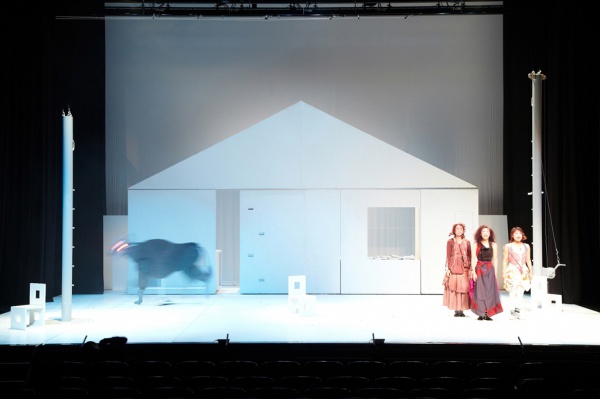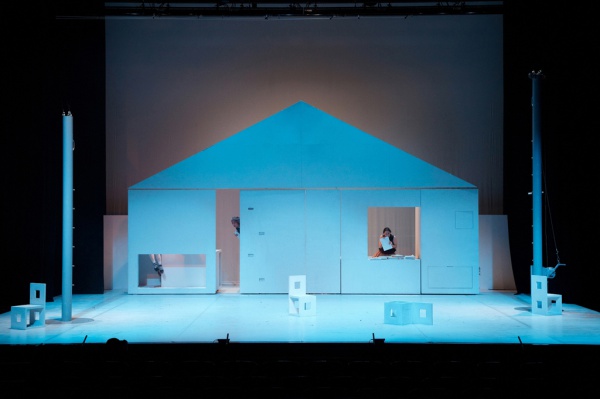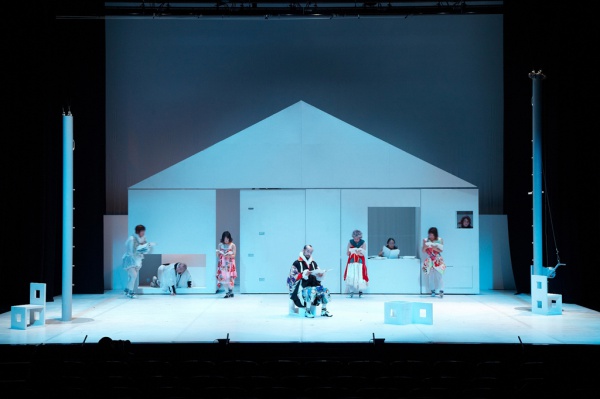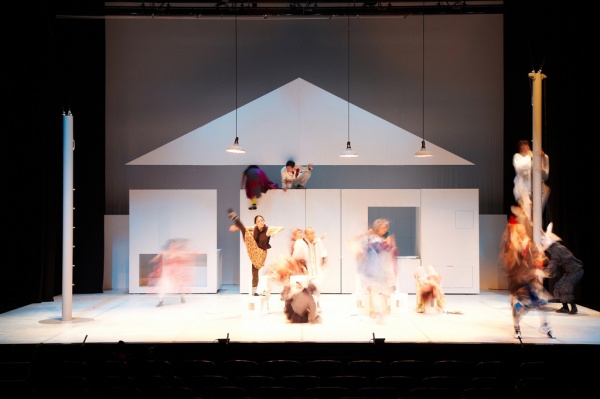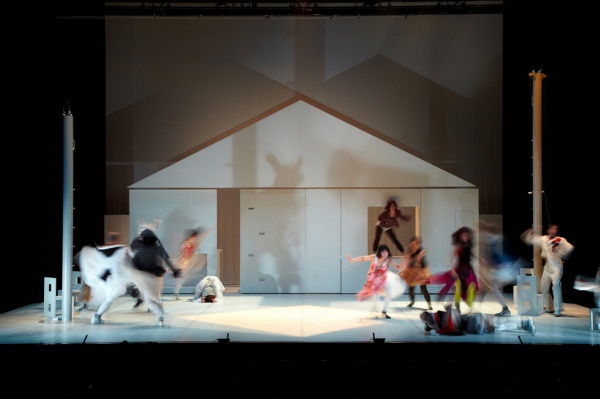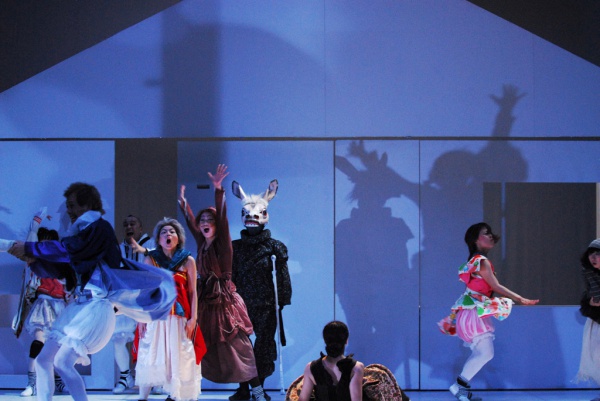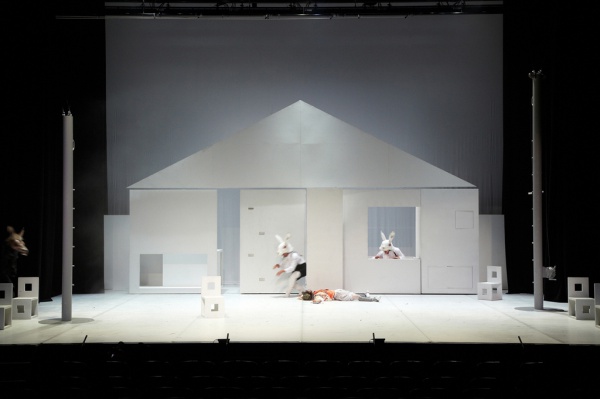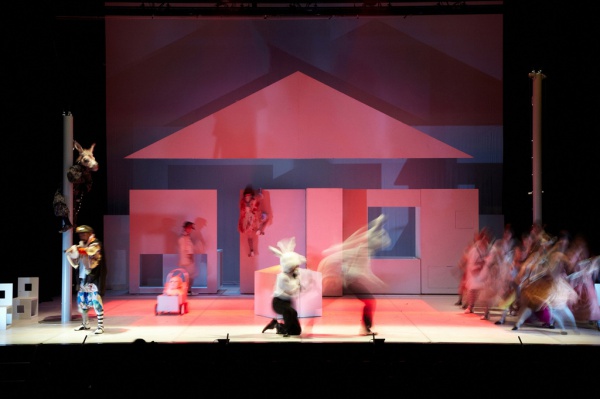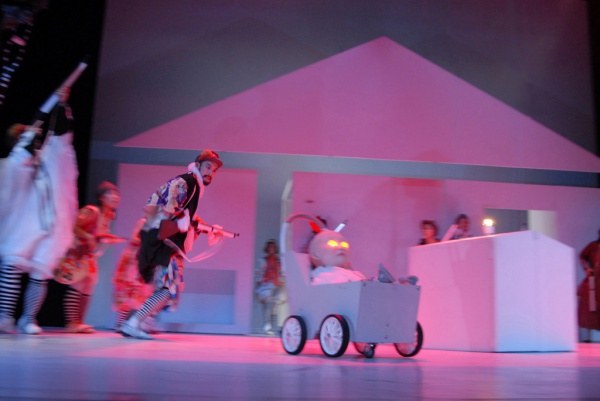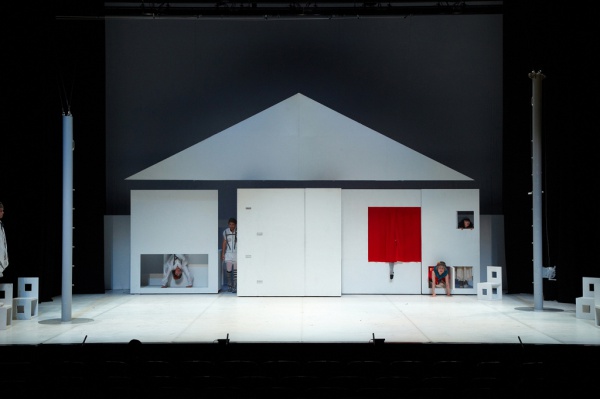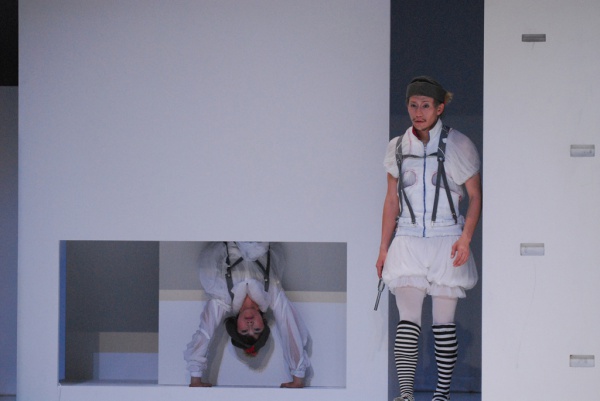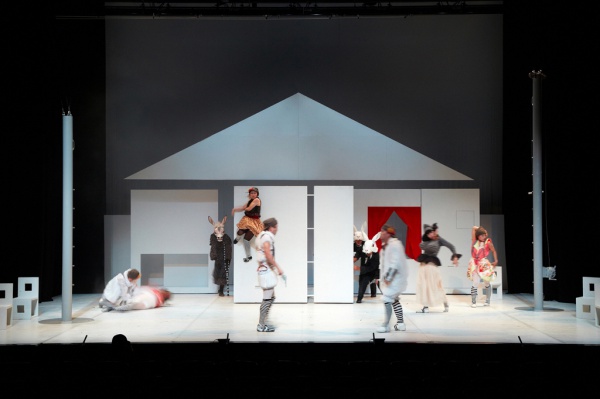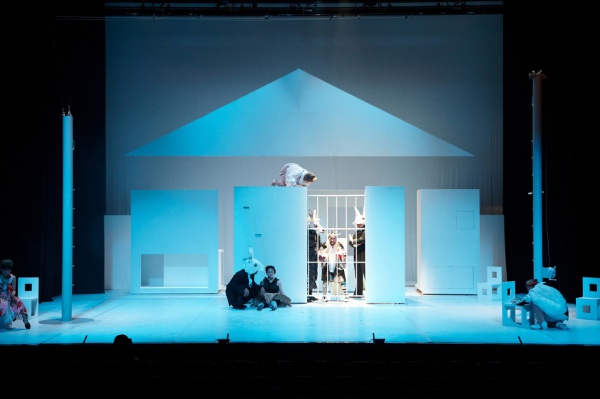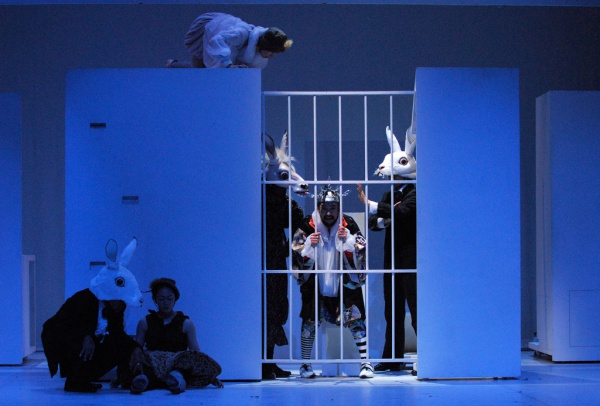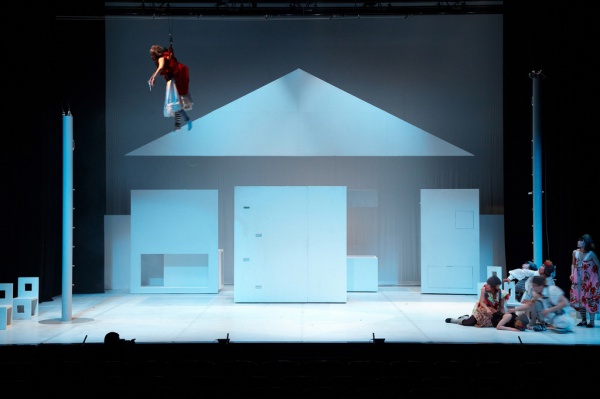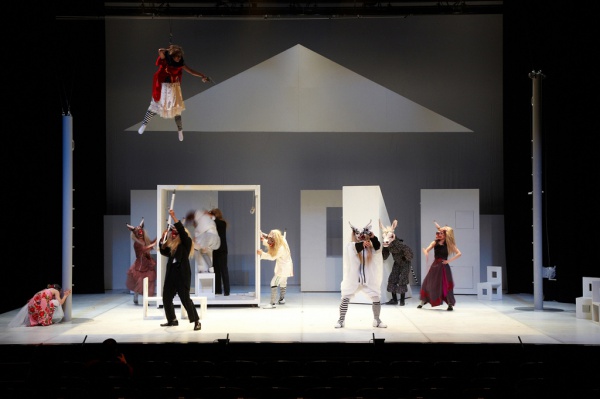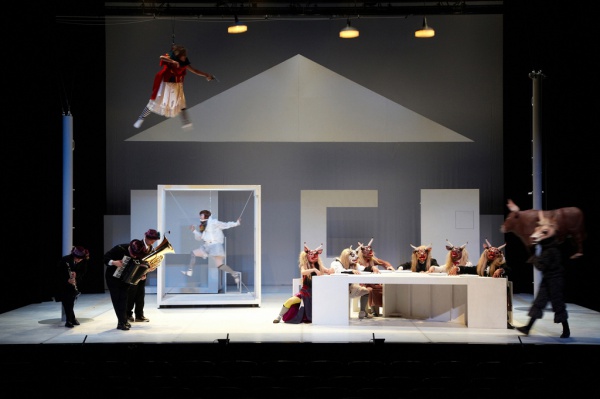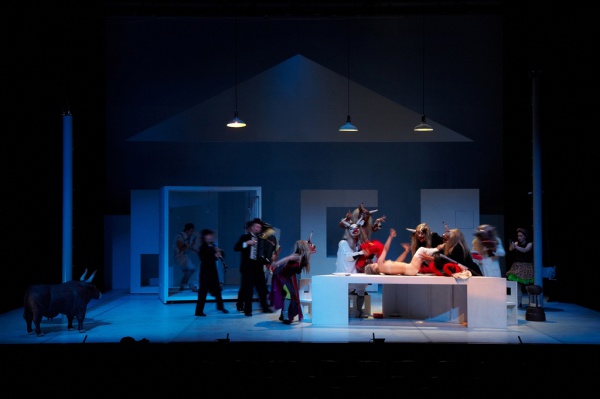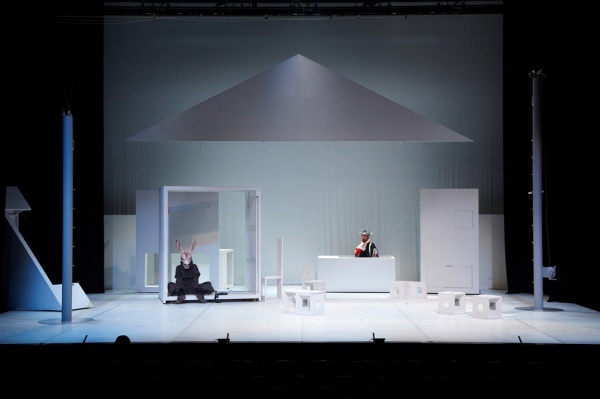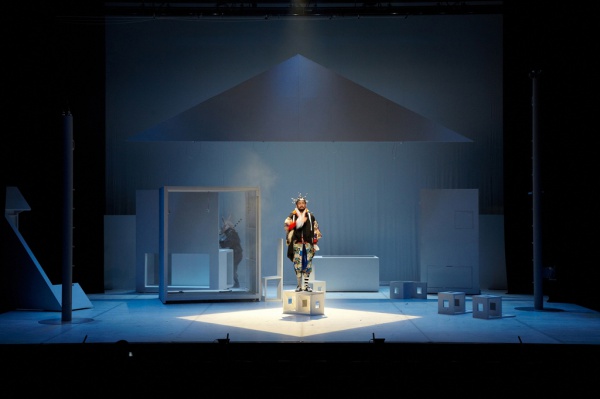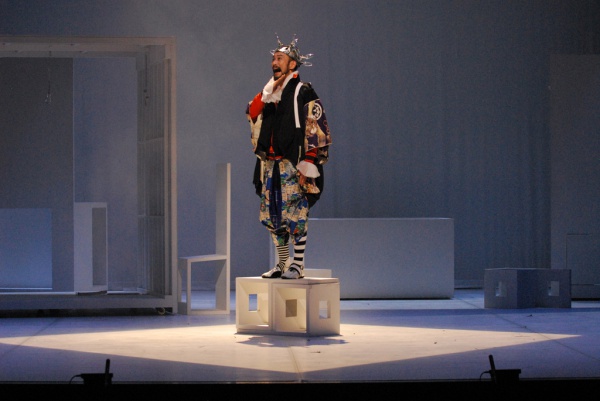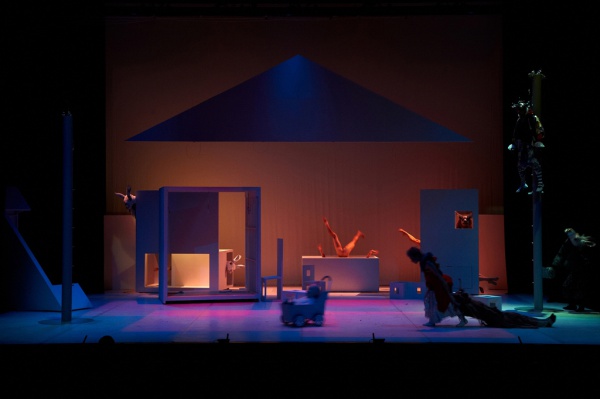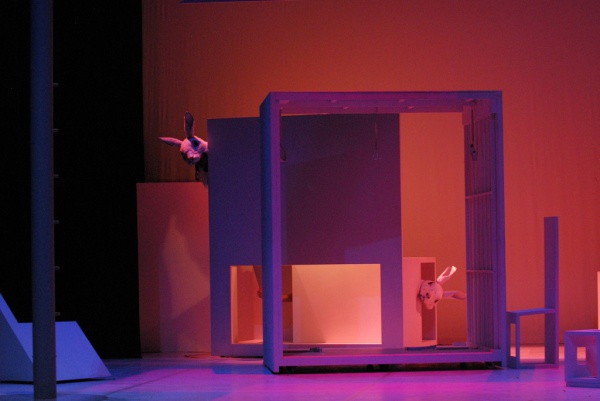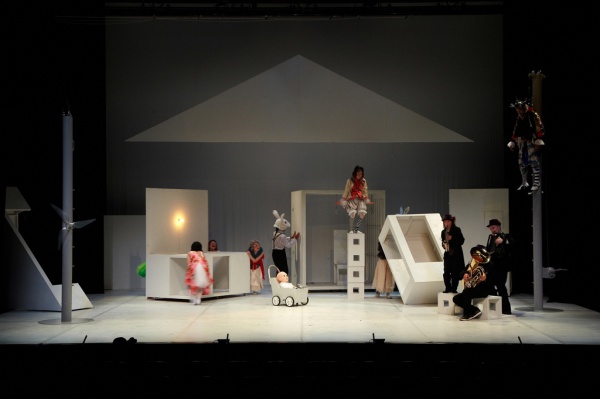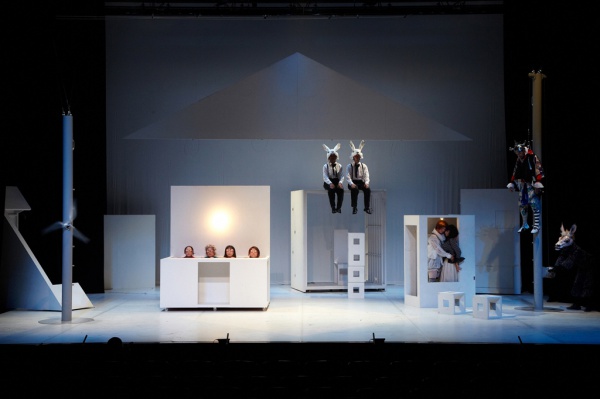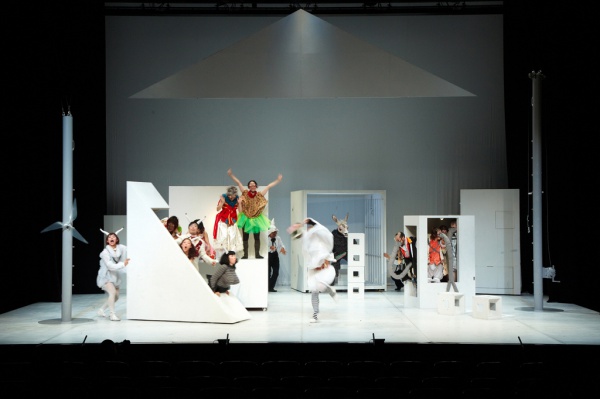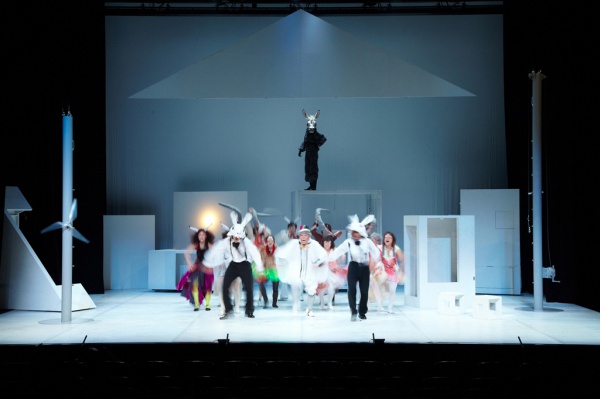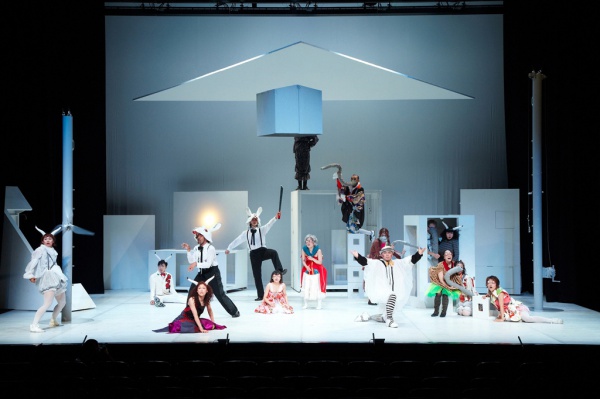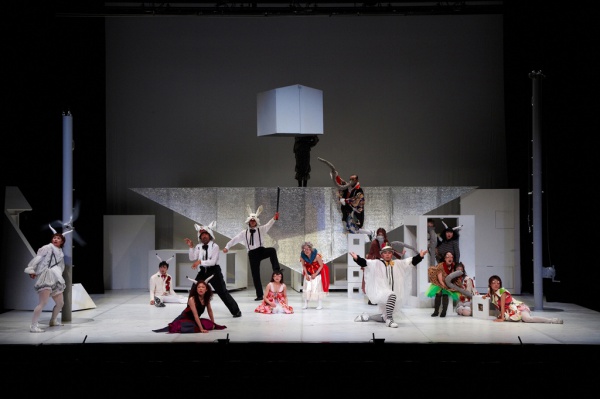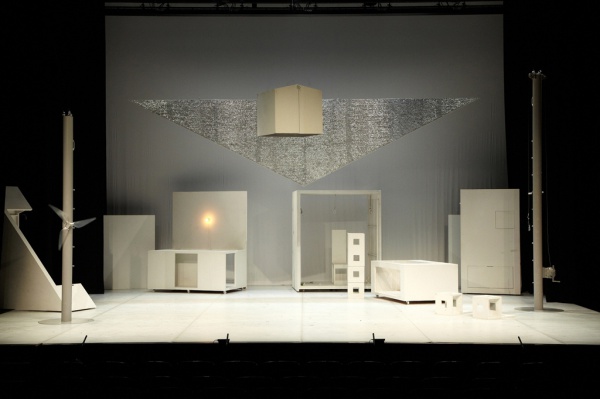主要用途: 舞台美術
施工: C-COM/滝沢金属工業
所在・会場: あうるすぽっと 豊島区立舞台芸術交流センター
延床面積: 116m2
設計期間: 2009.07-11
施工期間: 2009.11
会期: 2009.12.11-20
写真: 阿野太一/小池博史/ナム ジュンホ
小池博史主宰のカンパニー、パパ・タラフマラの新作公演「パンク・ドンキホーテ」の舞台美術を手がけることになった。パパ・タラフマラの舞台は、演劇なのかミュージカルなのかダンスなのか、またはそのどれでもない。芝居の背景という静的なものにとどまらない、徐々に変容していく動的な舞台を求められた。
奇怪な妄想に囚われた父親を持つ家族達の物語。現代の問題に触れながらも、悲観的ではなく希望を込めた明るさを伴っている。進行するにしたがって崩壊していく家族、それを象徴する白い家型が徐々に崩れていくような仕組みを持つ舞台セットを提案した。
この舞台セットでは一つの動きをしつつ、次のシーンのための布石を打ちながら動けるよう意識して細部を考えた。それはパパ・タラフマラの舞台が暗転しないことに起因する。つまり、セットを組み替える場面はなく常に動き続けることを意味する。最初、家を形作っていたパーツは徐々に所定の位置から外れ、方向が逆転し、または舞台から姿を消し、家としての意味を失っていく。完成したパズルをバ
ラバラにしていくように、舞台背景は道具に分解され、舞台上の総合芸術的なパフォーマンスに取り込まれる。
物語の最後には、三角形の屋根が反転して最初とはまったく違う様相に変容する。いつの間にか、人間とそれ以外の奇妙な動物との主従関係が逆転してしまう物語の進行ともあいまって、元の家型がなくなってしまうという衝撃的なクライマックスを迎える。
Principle use: STAGE SET
Production: C-COM / TAKIZAWA
Building site: OWL SPOT Toshima Performing Arts Center
Total floor area: 116m2
Design period: 2009.07-11
Construction period: 2009.11
Duration: 2009.12.11-20
Photo: Daici Ano / Hiroshi Koike / Nam Jangho
Our involvement with the performing arts scene came through Hiroshi Koike, founder of Pappa TARAHUMARA, to build a stage set for the company’s most recent production: “Punk Don Quixote”. Pappa TARAHUMARA’s performance offers a mixture of theater, musical performance and dance but often defies categorization. We felt that a
static backdrop was out of the question and thus we proposed a stage that would gradually morph, following the play in a dynamic way.
The story revolves around a patriarch consumed by wild delusions and the members of his family. The play deals with contemporary problems in a bright and non-pessimistic manner imbued with hope. We proposed a stage set with a house whose white walls would decay over time, portraying the family’s own disintegration as events unfold.
Since Pappa TARAHUMARA’s stage lights are never lowered to accommodate stage rearrangements, a great deal of thought and concern went into details to ensure the actions in one scene would set the stage for the next scene in a transitioning manner. Parts of the structure are turned upside down, moved or removed altogether from where they belong, causing it to gradually lose its purpose as a house. Like a puzzle disassembled into its pieces, the whole stage and its disarticulated parts become an integral part of
the performance.
Towards the end of the play, the gable roof is turned on its head, offering a completely different view to the spectator. Suddenly, the roles between humans and their strange creatures have been reversed. The story culminates with this shocking portrait as the
house and its household lay in ruins.
